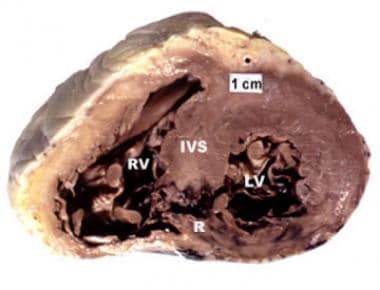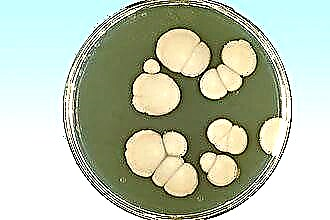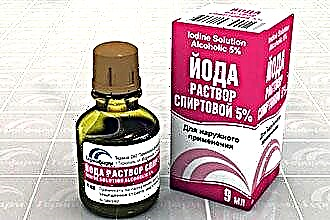A runny nose in children can appear at any time of the year and for very different reasons. You should not panic, but also ignore the unpleasant symptom. For young mothers, the advice of the famous professor E.O. Komarovsky. A pediatrician with vast experience, he always suggests the most effective and safest way to cope with any problem. Let's find out, when the child has green snot, what Komarovsky recommends to do.
Causes of the appearance of snot
First of all, Dr. Komarovsky advises to figure out the reasons why such discharge could appear. Any snot has only three possible reasons for the appearance:
 allergic;
allergic;- non-infectious;
- infectious.
But Komarovsky claims that it is the green snot that usually has an infectious cause.
The most common of them is ARVI, when pathogenic bacteria enter the respiratory tract along with the air. As a defense reaction, the baby's body begins to secrete mucus abundantly. The green color of the mucous secretions is given by special cells "neutrophils", which are trying to resist the onslaught of bacteria. When they are destroyed, a substance is produced that stains the snot.
At first, it is transparent and liquid, the body tries in this way to "wash" the infection from the nose. Gradually, for 2-3 days, the snot becomes more and more viscous and their color changes. Thick green snot indicates that although the child's immune system is working well, it still cannot cope on its own, and the pathogenic microflora continues to multiply. This means that the time has come to help the body and begin active treatment, at the initial stage, not necessarily with the use of antibiotics.
Another reason why a child may have green snot, Komarovsky considers the air in the room to be too dry. Especially if heating devices are still working in it.
 The mucous membranes of the baby's nose dry up and can no longer secrete enough secretion for normal hydration. And warm air in an unventilated room is an ideal breeding ground for pathogenic bacteria. Getting into the child's nose, they provoke inflammatory processes, in the fight against which the snot turns green gradually.
The mucous membranes of the baby's nose dry up and can no longer secrete enough secretion for normal hydration. And warm air in an unventilated room is an ideal breeding ground for pathogenic bacteria. Getting into the child's nose, they provoke inflammatory processes, in the fight against which the snot turns green gradually.
If such discharge appeared in a baby, then this may be due to normal physiological processes. His nasal passages are still so narrow that at the slightest dryness or swelling, they almost completely overlap. When any pathogenic microorganisms get into the nose, ideal conditions are created for their reproduction. With irregular and / or improper care of the baby, snot accumulates in the nose and turns green.
How to treat
 You will be very surprised, but if a child has green snot, Komarovsky strongly recommends starting treatment with a walk in the fresh air. Of course, in the event that there is no strong increase in body temperature. An ordinary walk kills several birds with one stone:
You will be very surprised, but if a child has green snot, Komarovsky strongly recommends starting treatment with a walk in the fresh air. Of course, in the event that there is no strong increase in body temperature. An ordinary walk kills several birds with one stone:
- creates an additional flow of oxygen;
- sunlight promotes the production of vitamin D and strengthens the immune system;
- the baby's mood rises and more energy appears;
- ultraviolet light has a detrimental effect on pathogenic microorganisms.
If for some reason it is not possible to go outside with the child, you can take him out to the balcony or ventilate the room in which he is constantly located.
 The second important point contributing to a speedy recovery is high-quality wet cleaning of the room. Dust build-up can be a source of allergies. In addition, its particles enter the nose and remain in the mucus, making the snot even more viscous. Humidified air makes breathing easier and prevents irritation of the mucous membranes.
The second important point contributing to a speedy recovery is high-quality wet cleaning of the room. Dust build-up can be a source of allergies. In addition, its particles enter the nose and remain in the mucus, making the snot even more viscous. Humidified air makes breathing easier and prevents irritation of the mucous membranes.
Before treating green snot in a child, Komarovsky strongly recommends doing a careful but very thorough rinsing of the nose with a solution of sea salt or drugs bought in a pharmacy (Aquamaris, Aqualor, Salin, Marimer). For washing, you need to use a small syringe, with which the snot is first removed, and then water is alternately poured into the nostrils with a small pressure.
Then the nose needs to be instilled. It is better for very young children to drip their nose with decoctions of herbs: chamomile, yarrow or aloe juice (Kalanchoe can be used).
When green snot in a child is 2 years old, there is much more choice than to treat. These can be vasoconstrictor drugs and, if necessary, antibiotic drops. If the snot is dark green, then the ears should be dripped at the same time to avoid the development of otitis media.
But no matter how simple the treatment of green snot in children may seem, Komarovsky strongly advises that if a runny nose lasts longer than a few days, be sure to consult a specialist. If acute rhinitis becomes chronic, chronic sinusitis may become the next stage. And with timely and correct treatment, the runny nose passes quickly and irrevocably.

 allergic;
allergic;

